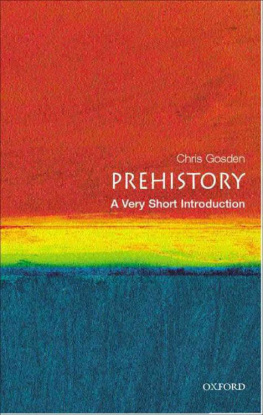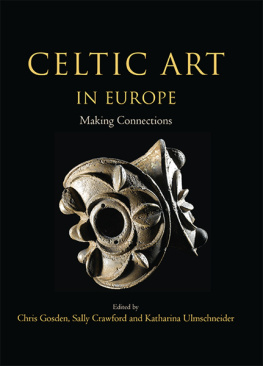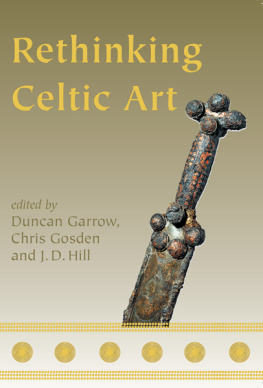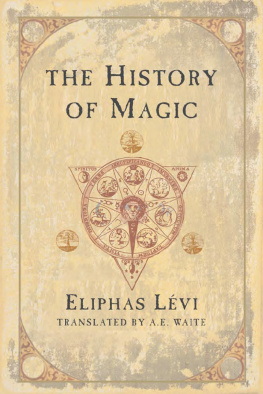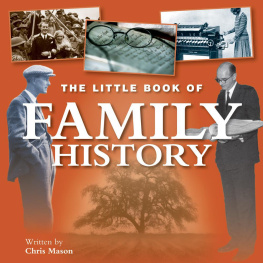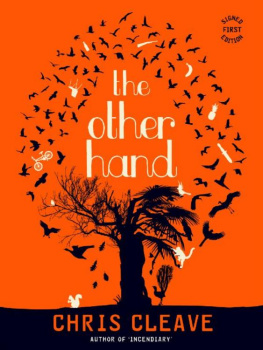Chris Gosden - The History of Magic
Here you can read online Chris Gosden - The History of Magic full text of the book (entire story) in english for free. Download pdf and epub, get meaning, cover and reviews about this ebook. year: 2020, publisher: Penguin Books Ltd, genre: Religion. Description of the work, (preface) as well as reviews are available. Best literature library LitArk.com created for fans of good reading and offers a wide selection of genres:
Romance novel
Science fiction
Adventure
Detective
Science
History
Home and family
Prose
Art
Politics
Computer
Non-fiction
Religion
Business
Children
Humor
Choose a favorite category and find really read worthwhile books. Enjoy immersion in the world of imagination, feel the emotions of the characters or learn something new for yourself, make an fascinating discovery.
- Book:The History of Magic
- Author:
- Publisher:Penguin Books Ltd
- Genre:
- Year:2020
- Rating:5 / 5
- Favourites:Add to favourites
- Your mark:
- 100
- 1
- 2
- 3
- 4
- 5
The History of Magic: summary, description and annotation
We offer to read an annotation, description, summary or preface (depends on what the author of the book "The History of Magic" wrote himself). If you haven't found the necessary information about the book — write in the comments, we will try to find it.
The History of Magic — read online for free the complete book (whole text) full work
Below is the text of the book, divided by pages. System saving the place of the last page read, allows you to conveniently read the book "The History of Magic" online for free, without having to search again every time where you left off. Put a bookmark, and you can go to the page where you finished reading at any time.
Font size:
Interval:
Bookmark:
from the Ice Age to the Present

PENGUIN BOOKS
UK | USA | Canada | Ireland | Australia
India | New Zealand | South Africa
Penguin Books is part of the Penguin Random House group of companies whose addresses can be found at global.penguinrandomhouse.com.

First published 2020
Copyright Chris Gosden, 2020
The moral right of the author has been asserted
The acknowledgements on constitute an extension of this copyright page
Cover design by Luke Bird
ISBN: 978-0-241-97965-5
This ebook is copyright material and must not be copied, reproduced, transferred, distributed, leased, licensed or publicly performed or used in any way except as specifically permitted in writing by the publishers, as allowed under the terms and conditions under which it was purchased or as strictly permitted by applicable copyright law. Any unauthorized distribution or use of this text may be a direct infringement of the authors and publishers rights and those responsible may be liable in law accordingly.
For Jane, Emily and Jack
| A volvelle a paper construction with moving parts for finding the places of the planets within the zodiac. It is the counterpart of the astrolabe, which was used for making observations of the sky (Apianus, Astronomicum Caesareum. Ingoldstadt, 1540. British Library Maps C.6.d.5, Pl. 27). |
| An eighteenth-century Ethiopian Ketab scroll with prayers for undoing spells to protect its owner. Kept in a silver case. Ketab scrolls originated in the Aksumite Empire (firsteighth centuries CE ) and combine Arabic and Christian influences. By the nineteenth century several million were in use. In Amharic script (British Library C11269-07). |
| A guide to interpreting the shapes formed by tea leaves in the bottom of the cup (from How to Read the Future with Tea Leaves, translated from Chinese by Mandra (1925). Stamford: Dolby Brothers. British Library 8633.eee.31). |
| The earliest surviving use of the term abracadabra in a cure for malaria. The word is in the triangle at the bottom right and is reduced by one letter every line, which will result in the disease diminishing in virulence (see ). Quintus Serenus Sammonicus, Canterbury, thirteenth century (British Library Royal MS 12E.XXIII, f. 20). |
| Map of the Palaeolithic cave sites mentioned in the text (drawn by Chris Green). |
| Lion person tusk figurine from Stadel Cave ( Museum Ulm. Photo: Oleg Kuchar, Ulm). |
| Painted Ice Age cave art (from the photograph Ekainberri, Arazi Aranzadi; courtesy of Ekainberri Management). |
| Shaman, from Les Trois-Frres Cave in France (from Abb Breuil (1952), Quatre cents sicles dart parital. Montignac and Dordogne: Centre dtudes et de documentation prhistoriques). |
| Map of sites mentioned in the text, dating between the Late Glacial and the Ubaid periods (drawn by Chris Green, after Eleni Asouti and Dorian Q. Fuller (June 2013), A Contextual Approach to the Emergence of Agriculture in South-West Asia: Reconstructing Early Neolithic Plant-food Production, Current Anthropology, v. 54, no. 3, Fig. 1). |
| Hilazon Tachtit burial the burial of a so-called female shaman (from Cyprian Broodbank (2013), The Making of the Middle Sea. London: Thames and Hudson, Fig. 4.5). |
| Photograph of the excavations and a plan of Gbekli Tepe ( DAI. Photo: E. Kck; plan: Klaus Schmidt, et al.). |
| Narrow side of pillar in Enclosure D at Gbekli Tepe ( DAI. Photo: N. Becker). |
| The variety of animals, such as snakes, scorpions and spiders, as well as abstract designs, carved on pillars at Gbekli Tepe ( DAI. Photos: C. Gerber, D. Johannes, I. Wagner). |
| A plastered skull from Jericho ( The Trustees of the British Museum. All rights reserved. Accession Number 1954,0215.1). |
| Map of Mesopotamia and Egypt with the main sites mentioned in the text (drawn by Chris Green). |
| Visualization of the White Temple at Uruk on its ziggurat (drawn by Chris Green, after artefacts-berlin. de and DAI). |
| Clay tablet a fragment of a Babylonian astronomical diary discussing astronomical and meteorological phenomena observed during the year 331330 BCE , months 6 and 7. Mention is made of the defeat of Darius III by Alexander the Great and of Alexanders triumphant entry into Babylon ( British Museum, Accession Number 1880,0617.496). |
| The goddess Tawaret appears on a number of objects, including the so-called magical wands or knives made from hippo ivory, ebony or glazed steatite (courtesy of the Metropolitan Museum of Art. Accession Numbers 86.1.91 (top); 30.8.218 (bottom)). |
| Scarabs and intaglios made into finger rings that were used as protective devices. These are made from various stones placed in gold settings. They date from the Twelfth Dynasty, c. 1820 BCE . Abydos, Tomb G62. ( British Museum, Accession Number EA 37308). |
| This scene comes from Queen Nedjmets Book of the Dead, stolen from the Royal Cache at Deir el-Bahari. Nedjmet and Herihor, her husband (whose burial has never been found), are making offerings to Osiris, Isis and the four sons of Horus, who are also watching a small scene of weighing the heart ( British Museum, Accession Number 10541). |
| General view of Fu Haos Tomb, showing the bronze vessels around the edge, human skeletons on ledges and traces of Fu Haos coffin in the centre (photograph courtesy of Jessica Rawson). |
Bronze owl-shaped wine vessel from Fu Haos Tomb (courtesy of Henan Provincial Museum; photo Niu Aihong ( )). )). |
| Shang Period (1192 BCE ) oracle on an ox scapula. The text says that there will be no misfortune in a particular ten-day period (British Library OR.7679/1595). |
| The main sites and topographic features mentioned in the text (drawn by Chris Green). |
| The reconstruction of the East Gate at Shimao (drawn by Chris Green, after Zhouyong Sun, et al. (2018), The First Neolithic Urban Center on Chinas North Loess Plateau: The Rise and Fall of Shimao, Archaeological Research in Asia, v. 14, 3345, Fig. 7). |
| The main site at Liangzhu and the surrounding dam-system sites (drawn by Chris Green after Nobuya Watanabe, et al. (2017), Utilization of Structure from Motion for Processing CORONA Satellite Images: Application to Mapping and Interpretation of Archaeological Features in Liangzhu Culture, China, Archaeological Research in Asia, v. 11, 40, Fig. 1). |
| Ritual sets of bronze vessels for feasting the ancestors (drawing by John Rawson (courtesy of Jessica Rawson), after Beijingshi wenwu yanjiusuo (1995), Liulihe Xi Zhou Yan guo mudi. Beijing: Wenwu Chubanshe). |
| Earliest known depiction of a Siberian shaman, by the Dutch explorer Nicolaes Witsen, who journeyed among the Samoyed and Tungus people in 1692. He entitled this Priest of the Devil and gave the shaman clawed feet to match this description (Amsterdam, 1705. British Library T00002-01). |
Font size:
Interval:
Bookmark:
Similar books «The History of Magic»
Look at similar books to The History of Magic. We have selected literature similar in name and meaning in the hope of providing readers with more options to find new, interesting, not yet read works.
Discussion, reviews of the book The History of Magic and just readers' own opinions. Leave your comments, write what you think about the work, its meaning or the main characters. Specify what exactly you liked and what you didn't like, and why you think so.


